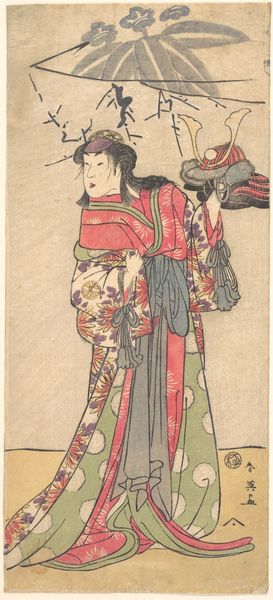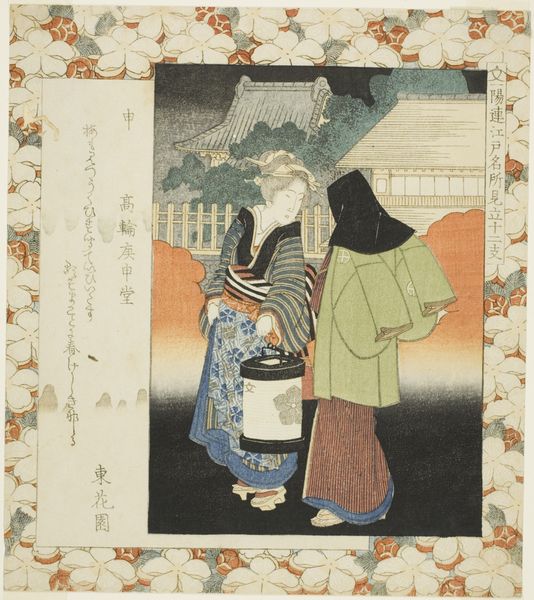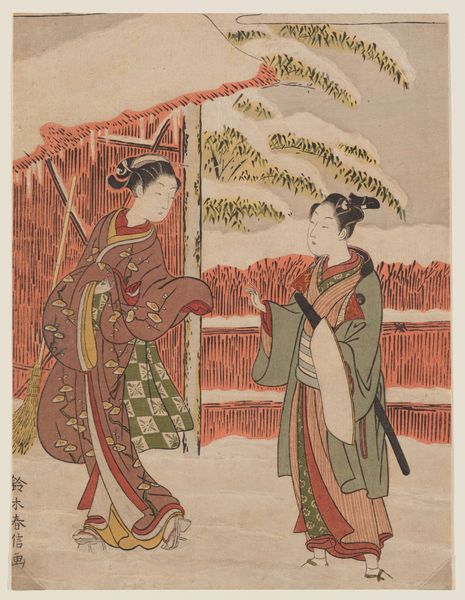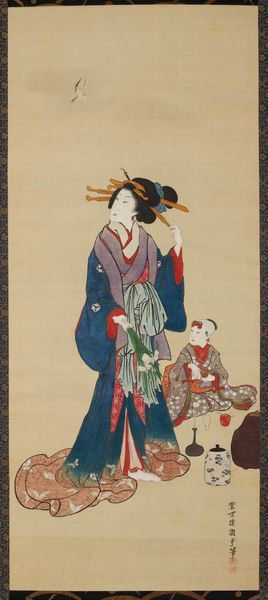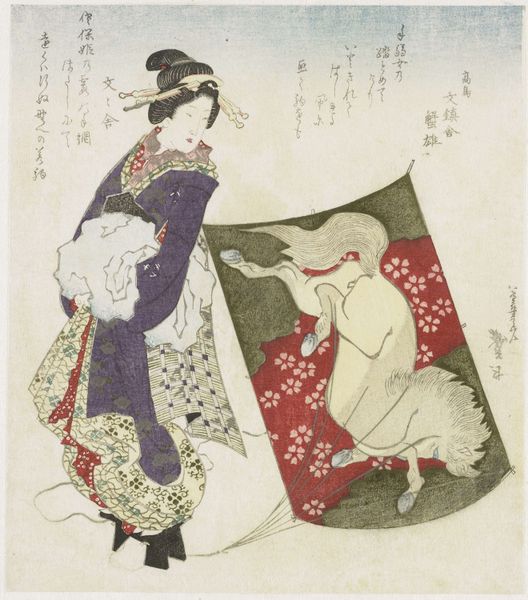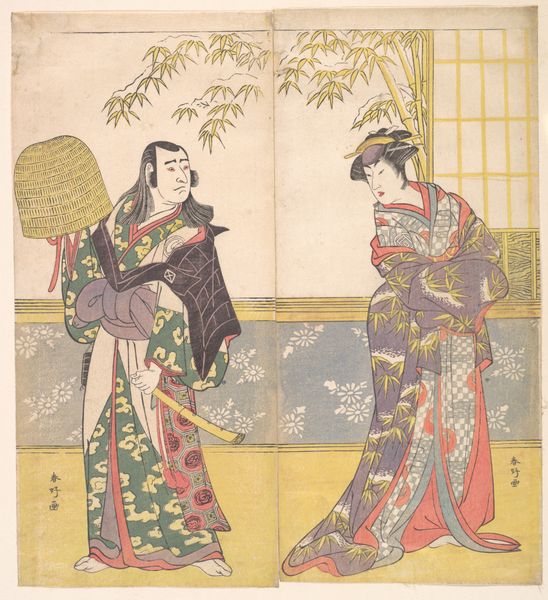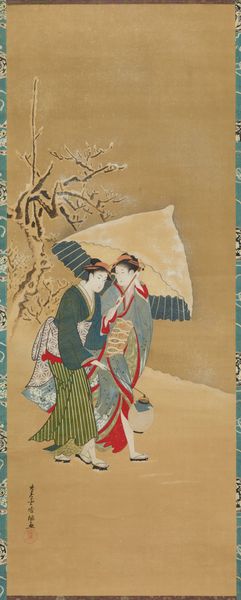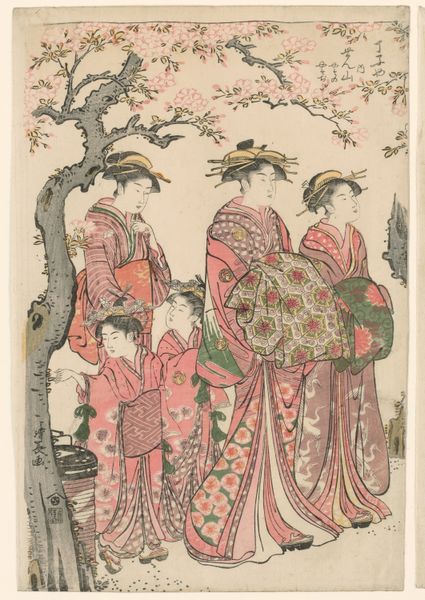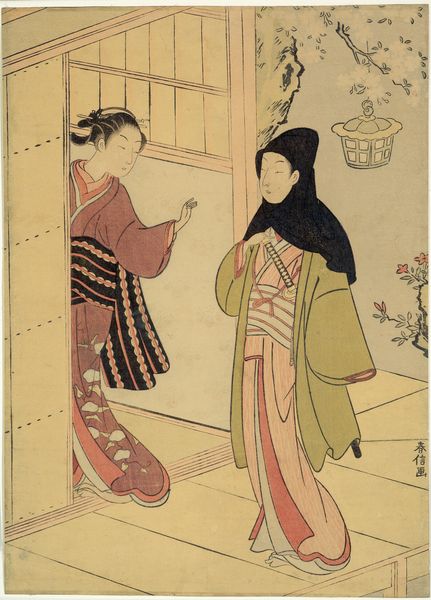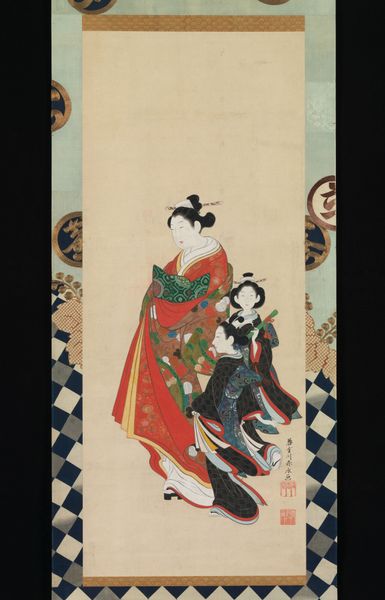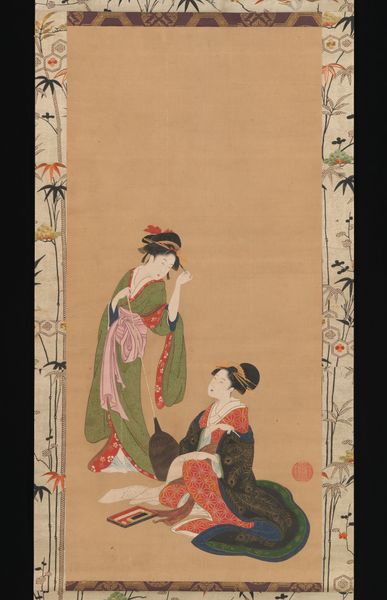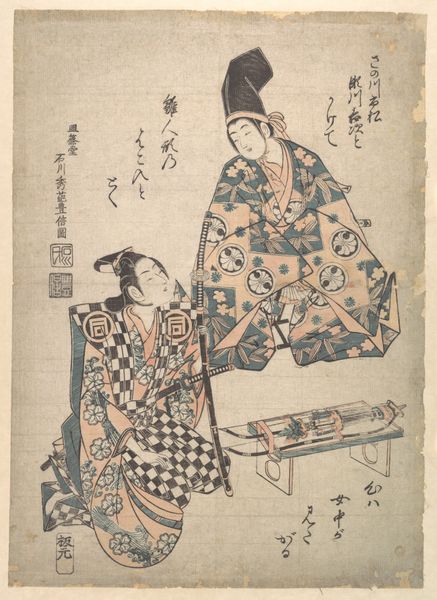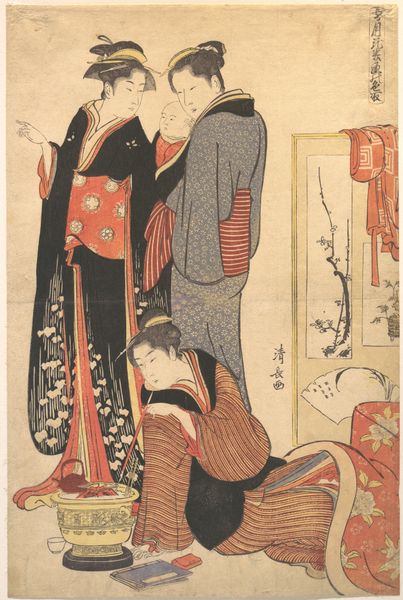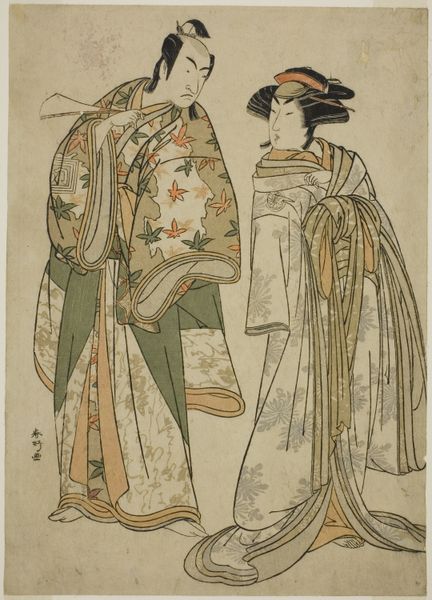![[A Japanese Woman and a Japanese Boy in Traditional Dress] by Suzuki Shin'ichi](/_next/image?url=https%3A%2F%2Fd2w8kbdekdi1gv.cloudfront.net%2FeyJidWNrZXQiOiAiYXJ0ZXJhLWltYWdlcy1idWNrZXQiLCAia2V5IjogImFydHdvcmtzL2VmZjIzYTg4LTM0ZWQtNGUxYi05NTlkLWZlMTE5YmIwNDZiNC9lZmYyM2E4OC0zNGVkLTRlMWItOTU5ZC1mZTExOWJiMDQ2YjRfZnVsbC5qcGciLCAiZWRpdHMiOiB7InJlc2l6ZSI6IHsid2lkdGgiOiAxOTIwLCAiaGVpZ2h0IjogMTkyMCwgImZpdCI6ICJpbnNpZGUifX19&w=3840&q=75)
[A Japanese Woman and a Japanese Boy in Traditional Dress] 1870s
0:00
0:00
Dimensions: 25.2 x 20.1 cm (9 15/16 x 7 15/16 in.)
Copyright: Public Domain
Editor: Here we have "A Japanese Woman and a Japanese Boy in Traditional Dress" by Suzuki Shin'ichi, taken in the 1870s, and it’s an albumen print. It's really striking how posed they are, yet there's a sort of everyday quality to their garments and the background. What’s your interpretation of the piece? Curator: It's tempting to see this as a straightforward depiction of Japanese life. But remember that this image was created during the Meiji Restoration, a period of rapid modernization and Westernization. These photographs were often produced for a Western audience, and we have to ask, how does that context shape the image? Editor: So, are you suggesting the subjects might have been posed in a certain way to cater to Western expectations? Curator: Precisely. The traditional dress, the staging with the pine tree…it speaks to a constructed image of Japan. Consider the power dynamics at play: who is looking at this image, and what assumptions are they bringing to it about gender, culture, and the East? Also, I wonder what they were paid and whether or not they had say in the production of the photograph. Editor: That definitely makes me see it in a new light. It’s more than just a historical snapshot; it’s a carefully curated presentation. Curator: Indeed. It raises questions about representation, cultural exchange, and the gaze. Think about it—this single image encapsulates the complex intersections of identity and politics. Editor: It's fascinating to consider how seemingly simple portraits can be so layered. Curator: Right? And the more questions you ask about who's behind the image and who's receiving it, the more fascinating it becomes. It certainly is a new and powerful way to perceive our roles in it, as viewers too.
Comments
No comments
Be the first to comment and join the conversation on the ultimate creative platform.
